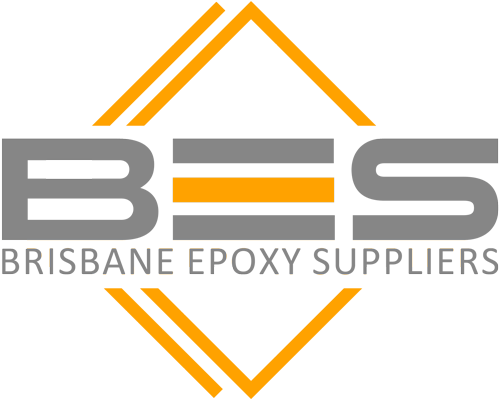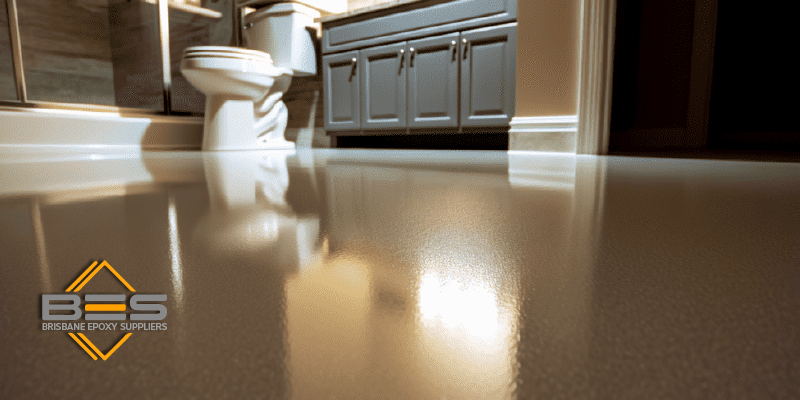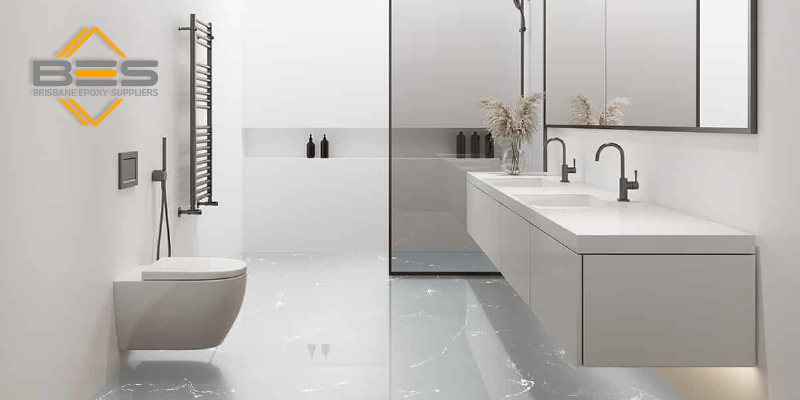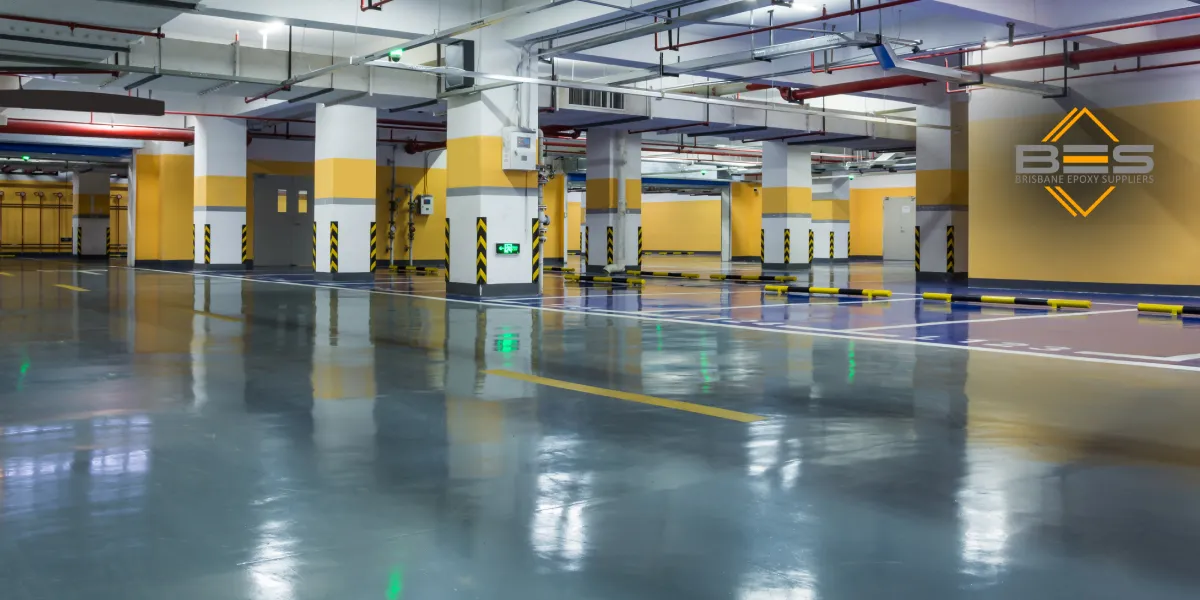How to Install an Epoxy Bathroom Floor (Step-by-Step Guide)
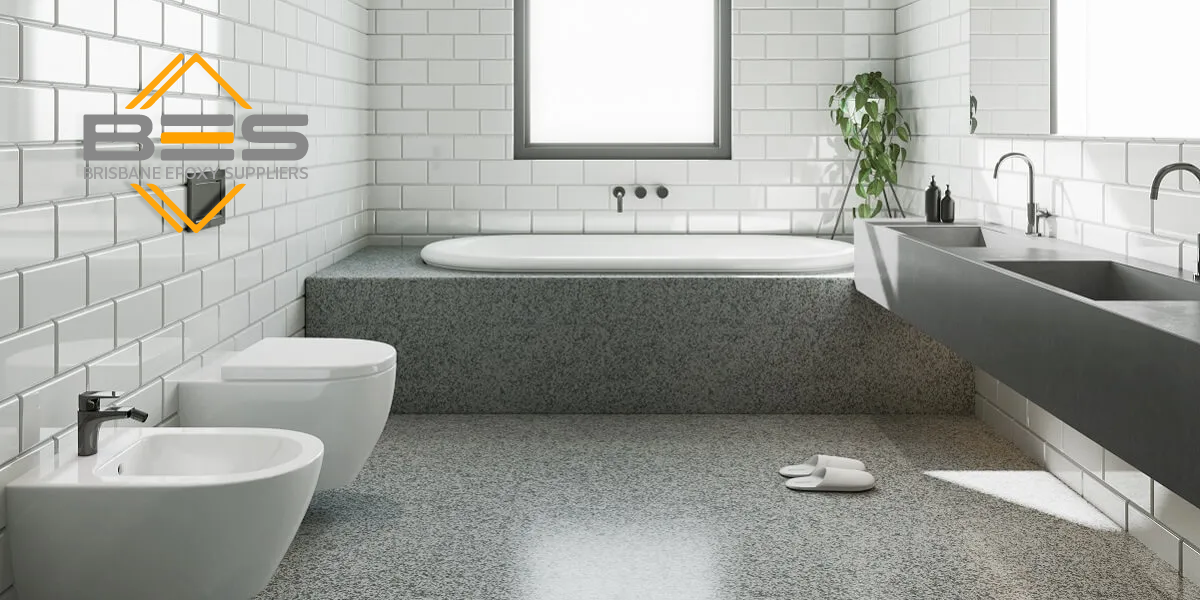
Thinking about a new floor for your home or business’s bathroom? An epoxy bathroom floor might be the perfect solution for you. They are durable, stylish, and easy to maintain. In Brisbane, many homeowners and businesses are choosing epoxy for their spaces. This type of flooring can endure wear and tear and will look great for years. Plus, these floorings come in various colors and finishes to match your style. In this article, we’ll guide you through the whole process of choosing and installing them. Let’s dive in and explore your amazing options!
Benefits of Epoxy Bathroom Floor
Epoxy bathroom floors have many benefits for a wide range of people, including homeowners. Here are just a few of their many benefits:
- Durability: These floorings are highly durable and can bear the harsh chemicals we usually use in bathrooms. They are also resistant to stains and scratches, so you don’t need to worry about that.
- Water Resistance: Epoxy floors are completely waterproof. They will not absorb water or moisture, which will most probably prevent mold growth. So, they are the perfect selection for your bathrooms.
- Easy to Maintain: These floors are very easy to clean. You just have to mop them with a mild detergent and water. You don’t need to spend lots of money on expensive products.
- Slip Resistant: You can make your floors slip-resistant. This is very important in a bathroom where wet floors will be a safety hazard.
- Stylish: Epoxy floors can be customized to match your style. There are a variety of colors, patterns, and finishes available for you to choose from.
- Cost-effective: Epoxy floors may have a higher initial cost than other flooring options, but that’s not going to be the case in the long run. They are durable, low-maintenance, and can increase the value of your home.
Epoxy Bathroom Floor: Safety Matters
Durability and water resistance of epoxy floorings are the main things that make them a popular choice for bathrooms. But don’t forget about the safety of using epoxy floors in humid environments.
Slip resistance is a key safety factor in bathrooms, especially in wet areas. You can make these floors slip-resistant by adding special additives or textures. This is particularly important in public restrooms, spas, and wet rooms where people may be barefoot or wearing socks.
Unexpectedly, color and design are important in that matter. Floors with light colors will create a brighter, more welcoming atmosphere. This will reduce the risk of slips and falls. Also, non-slip patterns can be combined into the design to enhance safety.
Epoxy Bathroom Floor: Materials and Tools for Installation
Epoxy bathroom floors are durable and stylish, but they require careful installation. Before you begin, make sure to gather the necessary materials and tools. The necessary materials include:
- Primer: To improve epoxy adherence and durability, apply primer first, which is a foundation coat.
- Concrete cleaner: While preparing the floor, make sure to clean it thoroughly to avoid fumes.
- Patching compound: If you want a smooth and seamless surface, you have to fill all cracks carefully.
- Roller: To apply epoxy on the surface, you need a roller, which helps you spread the paint evenly.
- Mixing bucket: To mix hardener and resin, you need mixing buckets.
- Stirring sticks: They can help you mix resin with hardener well, so you will have a smooth and even application.
- Protective gear: including gloves, a mask, and eye protection, in order to protect your body while applying epoxy, because the fumes from epoxy can hurt you.
Extra and more professional Tools you need include: Sander, Vacuum cleaner, Screwdriver, Putty knife, and caulk gun.
Epoxy Bathroom Floor: Installation Process
Installing epoxy flooring in your bathroom can be a DIY project that you can do with a little time and effort. Here’s a step-by-step guide for installing them:
- Prepare the floor: Before you begin, check your bathroom floor and clean it of any debris. Fill cracks with crack sealer guns that are easy to use and convenient, or repair damages for the best results.
- Add the primer: For bonding the epoxy and the surface of your floor, apply it evenly in a thin coat.
- Mix the epoxy: Follow the manufacturer’s instructions to mix the epoxy resin and hardener.
- Apply the epoxy: Once you have mixed the materials, apply them to your floor in a thin, even coat. Give them some time to dry completely, then apply the second coat.
- Add a top coat: A top coat protects your epoxy floor and gives a glossy finish.
- Add finishing touches: You can customize your epoxy floor with decorative elements or anti-slip additives.
Epoxy Bathroom Floor: Cost Considerations
You can think of epoxy bathroom floors as an investment. You may think they will cost you a fortune, but by spending more money at the beginning, you can have astonishing bathroom floors for years to come. This is so important and will add to the value of your house if you ever want to sell it.
The cost of installation varies depending on several factors, like the size of your space, the complexity of the design, and the quality of the materials used.
Material costs can range from $30 to $35 per square meter for two coats of epoxy. Higher-quality materials may be more expensive, but they usually have better durability and longevity.
Labor costs will depend on the complexity of the installation. Accordingly, simple projects may require less labor and money.
Is an Epoxy Bathroom Floor a good choice for me?
Epoxy bathroom floors are durable, water-resistant, and stylish. They can be costly, but they’re long-lasting and low-maintenance. Safety is important; choose slip-resistant and easy-to-clean options. If you want a classy and clean bathroom, these options are going to suit you well. But don’t forget to consider pros and cons before deciding to apply epoxy.
Conclusion
Installing an epoxy bathroom floor is a smart investment for homeowners seeking durability, style, and easy maintenance. With its waterproof nature, slip-resistant options, and long-lasting finish, epoxy is ideal for bathrooms of all sizes. Whether you take the DIY route or hire a professional, proper surface preparation and careful application are key to a successful result. If you’re ready to upgrade your space, an epoxy bathroom floor offers both beauty and function that will stand the test of time.
